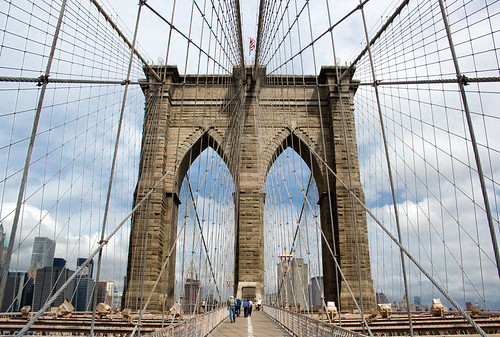
ESPAÑOL
Promotor: Autoridades Locales de Nueva York
Ingeniero: John Augustus Roebling e hijo
Tipo: Puente Colgante
Luz: 1833 metros
Tramo principal: 486.30 metros
Ancho: 26 metros
Altura torres: 84 metros
Peso: 14.680 toneladas
Presupuesto: 15.1 millones $
El famoso Puente de Brooklyn salva el Río Este para unir la isla de Manhattan con el barrio residencial de Brooklyn. Su construcción fue fruto de la visión que tuvo el Ingeniero John Augustus Roebling (1806-1869) en el año 1852, quien como propietario de la empresa metalúrgica con el mismo nombre no pudo llegar a Brooklyn en ferry por estar el río Hudson cubierto de hielo. Roebling convenció a las Autoridades Locales para la construcción de un nuevo puente que uniese la ciudad de Manhattan con Brooklyn. Después de tres largos años elaborando el proyecto y sin haberse colocado la primera piedra, el propio autor definió el diseño del puente como "una verdadera obra de arte". No obstante, antes de su construcción, en el año 1867 se creaba la empresa denominada "New York Bridge Company", que se iba a encargar de la construcción y el mantenimiento del costoso puente. El proyecto del Puente de Brooklyn se aprobó el 1 de Junio de 1869 y sólo 5 días después Roebling sufría un triste accidente que le ocasionó la amputación de un pie; más tarde moría por la enfermedad del tétano. Su hijo Washington Roebling (1837-1926), a pesar de que padeció la enfermedad de descompresión debido a su trabajo como buzo, dirigió la construcción del puente que veía desde la ventana de su casa; Washington iba dando las indicaciones pertinentes a su mujer quien a su vez transmitía dichas órdenes a los obreros in situ en la obra.
El tablero dispone de una luz de 1883 metros y lo sostienen dos enormes torres de Estilo Neogótico con sus característicos arcos apuntados. Cada torre de piedra caliza y granito cuenta con 84 metros de altura sobre el lecho del Río Este, y deja dos aberturas para el tránsito peatonal y las bicicletas que hay que sortear alrededor del pilar central. El puente dispone de unos cables principales con una sección de Ø40cm. cada uno a los que se anclan cuatro paredes de tirantes, dos de ellas que arrancan desde el pilar central y que envuelven la pasarela peatonal, y los otros dos en los extremos de cada torre; estos tirantes de acero tienen la particularidad de colocarse perpendicularmente unos con otros y que a modo de malla, hacen que el puente obtenga una mayor resistencia para soportar el tablero. Los 26 metros de ancho con los que iba a contar el puente se destinaron en un principio a vías de ferrocarril, tráfico rodado y peatonal; dos vías de ferrocarril en ambos sentidos, dos carriles de tráfico rodado para cada sentido más una pasarela peatonal y bicicletas más elevada que el resto en el centro.

En la actualidad, se han suprimido las dos vías de ferrocarril y se ha ganado un carril más de tráfico rodado para cada sentido, haciendo de este famoso puente uno de los más transitados del mundo en la actualidad. El artista danés Olafur Eliasson , para rejuvenecer el famoso puente de Nueva York e inspirándose en las famosas Cataratas del Niágara, recibió el encargo por parte de las autoridades locales de Manhattan e ideó varias estructuras metálicas que mediante un sistema hidráulico bombean el agua del propio Río Este mediante energías renovables hasta la cima; con este sistema innovador, se consiguió que pudiesen caer a modo de cascada 160.000 litros de agua por minuto. La construcción del Puente de Brooklyn se inició el 3 de enero de 1870 y fue abierto al tráfico rodado el 24 de Mayo de 1883 a las 14:00 horas con una gran inauguración multitudinaria. El diseño de este interesante puente colgante ha inspirado también a otros arquitectos e ingenieros de todo el mundo para construir otros puentes. El famoso Puente de Brooklyn fue el puente colgante más largo del mundo durante nada menos que 20 años y se ha convertido, junto con la famosa Estatua de la Libertad, en un auténtico icono indudable para el Estado de Nueva York.

ENGLISH
Promoter: Local Authorities of New York City
Engineer: John Augustus Roebling and son
Type: Suspension Bridge
Light: 1833 meters
Main span: 486.30 meters
Width: 26 meters
Tower height: 84 meters
Weight: 14,680 tonnes
Budget: $ 15.1 million
The famous Brooklyn Bridge spans the East River to connect Manhattan Island with the residential neighborhood of Brooklyn. Its construction was the result of the vision that the engineer John Augustus Roebling (1806-1869) in 1852, who as owner of the metallurgical enterprise with the same name could not come to Brooklyn by ferry to be ice-covered Hudson river. Roebling convinced to Local Authorities for the construction of a new bridge that linked the city of Manhattan with Brooklyn. After three long years to develop the project without having laid the first stone, the author defined the design of the bridge as "a true work of art". However, prior to constructions, in 1867 creating the company called "New York Bridge Company", which would be in charge of the construction and maintenance of the expensive bridge. The Brooklyn Bridge project was approved on June 1, 1869 and only five days after Roebling suffered a sad accident which caused the amputation of a foot, and later died from the disease tetanus. His son Washington Roebling (1837-1926), although it suffered from decompression sickness due to his work as a diver, he directed the construction of the bridge he saw from the window of his home, Washington was giving the indications relevant to the woman who turn transmitting such orders to the workers in the work site.

The board has a light of 1883 meters and supporting two huge towers of Neo-Gothic style with its characteristic pointed arches. Each tower of limestone and granite has 84 feet above the bed of the East River, leaving two openings for pedestrian and bicycle must navigate around the central pillar. The bridge has a main cables with a section of Ø40cm. each to the four walls that are anchored with straps, two of them started from the central pillar and the surrounding walkway, and two at the ends of each tower, these steel straps are placed perpendicular to the particularity of each with others and as a screen, make the bridge to obtain a greater strength to support the board. The 26 meters wide with which the bridge would have initially went to railways, and pedestrian traffic, two railway lines in both directions, two lanes of traffic in each direction plus a pedestrian walkway and bicycle higher than the rest in the center.

Currently, we have deleted the two railroad tracks and has earned a lane of traffic in each direction, making this famous bridge one of the busiest in the world today. The Danish artist Olafur Eliasson , to rejuvenate the famous bridge in New York and inspired by the famous Niagara Falls, was charged by local authorities in Manhattan and came up with several metallic structures using a hydraulic pump the water from the River itself This renewables to the top, with this innovative system, was obtained that could fall like a waterfall 160,000 liters of water per minute. The construction of the Brooklyn Bridge began on January 3, 1870 and was opened to traffic on May 24, 1883 at 14:00 pm with a massive grand opening. The design of this interesting suspension bridge has also inspired other architects and engineers around the world to build other bridges. The famous Brooklyn Bridge was the longest suspension bridge in the world for no less than 20 years and has become, along with the famous Statue of Liberty, no doubt a true icon for the State of New York.

"Images Brooklyn Bridge, New York, USA"
Image 1 Copyright © José Miguel Hernández Hernández, Flickr
Image 2 Copyright © Postdlf, License
Image 3 Copyright © Public domain
Images 4-6 Copyright © Chris Martino, Flickr
Image 5 Copyright © AngMoKio, License
Image 7 Copyright © Jeffrey Bary, Flickr
"Text" Copyright © José Miguel Hernández Hernández
Editor, Escritor y Fotógrafo de Arquitectura /
Publisher, Writer and Architectural Photographer
Todos los derechos reservados / All rights reserved
www.jmhdezhdez.com
Others works in New York / Otras obras en Nueva York
Bank of America Tower
Manhattan, New York, USA
Cook+Fox Architects LLP
The IAC Building
New York City, USA
Gehry Partners LLP
The New York Times Building
Manhattan, New York City, USA
Renzo Piano Building Worldshop
Hearst Tower
Manhattan, New York, USA
Foster + Partners
Two World Trade Center
Manhattan, New York, USA
Minoru Yamasaki & Associates
Seagram Building
Manhattan, New York City, USA
Mies van der Rohe
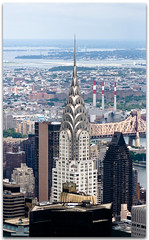
Chrysler Building
Manhattan, New York, USA
William van Alen
Empire State Building
Manhattan, New York
Shreve, Lamb & Harmon Associates
Fuller or Flatiron Building
Manhattan, New York, USA
Daniel Burham
Statue of Liberty
New York, USA
Frédérick-Auguste Bartholdi
Others Suspension Bridges / Otros Puentes Colgantes
Juscelino Kubitschek Bridge
Brasilia, Brasil
Alexander Chan
Millenium Bridge
London, United Kingdom
Foster + Partners
Golden Gate Bridge
San Francisco, California, USA
Joseph B. Strauss y otros
MUY IMPORTANTE!!! VERY IMPORTANT!!!
Deja tu comentario sobre este reportaje al pie de este post donde dice "Publicar un comentario en la entrada"; me será de gran valor para seguir mejorando este sitio web y te contestaré con la mayor brevedad posible... Muchas gracias!
No obstante, si te ha resultado interesante este reportaje y también el Blog en general, por favor, no dudes en hacerte Fan de la página de Fans del Blog de José Miguel Hernández Hernández en Facebook aquí
Nota importante: Una vez que hayas entrado en la página de Fans del Blog en Facebook, con sólo hacer click en el botón de "Me gusta", a partir de ese momento estarás al tanto de todos los nuevos reportajes interesantes relacionados con la Arquitectura y la Ingeniería que aquí se vayan publicando para no perder ningún detalle...
También puedes suscribirte por e-mail (te llegaría un e-mail con el enlace de cada artículo en el mismo momento en que sea publicado), o bien también puedes seguir el Blog a través de Twitter aquí
Nos vemos en el Blog!
Leave a comment on this story at the bottom of this post where it says "Post a comment in the entry", I will prove invaluable to further improve this website and I will answer as soon as possible .. . Thank you very much!
However, if you this story was interesting and the blog in general, please do not hesitate to make Fan Fans of the Blog page José Miguel Hernández Hernández on Facebook here
Very important: Once you enter the page Blog fan of Facebook, simply click on the button Like "From that moment you are aware of all new interesting stories related to the Architecture and Engineering are published here to avoid losing any detail ...
Can also subscribe by e-mail (I would e-mail with a link to each item in the same time it is published), or you can follow through Blog Twitter here
See you at the Blog!
HOME GEOGRAPHY ARCHITECTURE ENGINEERING SKYSCRAPERS
BRIDGES BUILDINGS TOWERS PUBLICATIONS ABOUT ME CONTACT
Copyright © José Miguel Hernández Hernández
Editor, Escritor y Fotógrafo de Arquitectura /
Publisher, Writer and Architectural Photographer
http://www.jmhdezhdez.com/
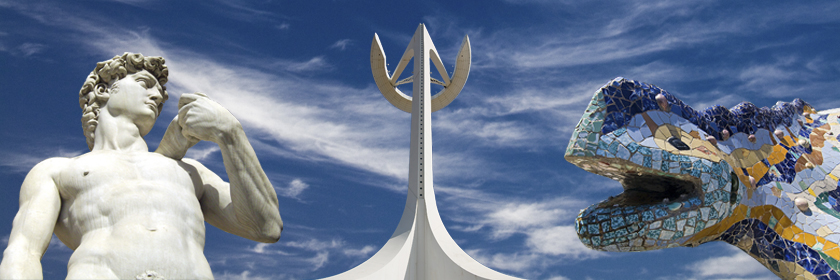







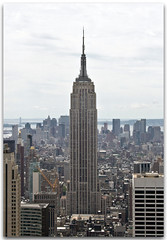
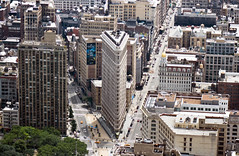






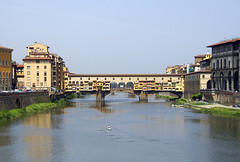




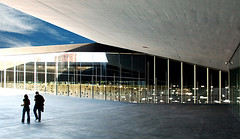


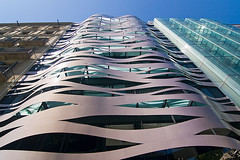



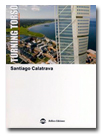

No hay comentarios:
Publicar un comentario